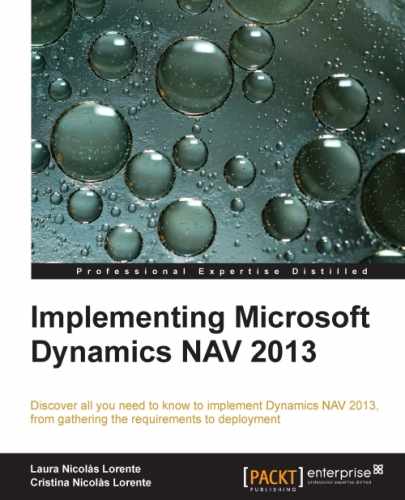The day a company moves to Microsoft Dynamics NAV, they can start creating all kinds of documents in the system for their daily work: sales orders, purchase orders, production orders, and so on.
Some chances exist, that some documents on the old system have not yet been completed, for example, sales orders that have not yet been shipped, purchase orders that have not yet been received, or production orders that have yet not been finished.
What should be done with all these documents?
The first recommendation would be to have the least possible open documents on the old system on the day you start working with Dynamics NAV.
For those documents that could not be finished before migrating to Dynamics NAV, there are a couple of strategies you could follow:
- Finish them in the old system and recreate the movements in Dynamics NAV. This will mean doing double the manual work and some manual checks and asking users to function somewhat differently from how they have been taught to in Dynamics NAV. All of this added to the fact that users may still not be 100 percent comfortable with the new system may lead to some errors. But it may be an option to be taken into account.
How should users act if this is the chosen option?
When an open sales order is shipped in the old system, you will have to do a negative adjustment in Dynamics NAV to reflect the inventory decrease. No sales shipment will exist in NAV, though, the person responsible for posting sales invoices will not have the information in NAV for what to invoice. He will have to check the old system as well and do a manual invoice in Dynamics NAV. This will be done using a G/L account and not the item number since we do not want the inventory decrease to be posted again while posting the invoice.
You could think of similar strategies for all other kinds of documents that still exist on the old system and that will be finished at some point.
- Create them in Dynamics NAV and finish them in the new system. This strategy may also involve some manual work, extra checks, and acting differently for these documents. You could create all open documents in Dynamics NAV using any of the migration tools explained in this chapter, keeping in mind that:
- If a sales order line, for instance, has already been partially shipped in the old system, only the pending quantity should be transferred to Dynamics NAV.
- In some cases, most of the lines of a document may have been finished, but the document is open because a single line is still pending. In this case, only this line should be transferred to Dynamics NAV.
- For tracing purposes, whenever it is possible, try to create the documents in Dynamics NAV using the same document number they were given on the old system.
- If the documents are created in Dynamics NAV, you will be able to finish them without having to do any extra work or extra checks. You will be able to act normal in Dynamics NAV.
- You will probably have to do an extra check and extra work with all the partially finished documents. Let's imagine you had a partially shipped sales order on the old system. Only the pending lines and quantities have been transferred (and finished) in Dynamics NAV. Imagine the company does not post the invoice for the sales order until the sales order has been completely shipped. The sales order (and sales shipment) in Dynamics NAV will not have complete information about the original sales order. To be able to post the sales invoice in Dynamics NAV, you will have to use the sales shipment existing in NAV, but you will also have to complete the sales invoice with information that is in the old system.
Open documents can be handled, but they imply extra work. That is actually why our recommendation was to try to finish as many documents as possible in the old system before migrating.
You could think of some other strategies, for example, you could have created the open documents in Dynamics NAV in a way in which no extra work is needed in any of the processes to actually finish the document.
In the sales order case, you could have created the pending lines for the pending quantities and also the lines already shipped but not yet invoiced.
For those last lines, you could have used G/L accounts instead of items. After creating them in Dynamics NAV, they should be posted. That way, we have a scenario in which:
- The complete information of the sales order exists in Dynamics NAV
- Posting the already shipped but not yet invoiced lines as G/L entries will not lead to wrong inventory information for the items
- Posting the already shipped but not invoiced lines will create a sales shipment that you will be able to use while doing the sales invoice (although in Dynamics NAV the sales shipment may be given a different document number, from what was given in the old system, which may lead to mistakes or misunderstandings).
Even more elaborate strategies can be used. Think of all possible strategies, analyze them, and determine how much work is needed in the migration process (define the data to be imported, the migration tool to be used, and so on), how much work is needed by the users to finish those documents, and so on. After analyzing all of them, choose the one that best meets your requirements.
